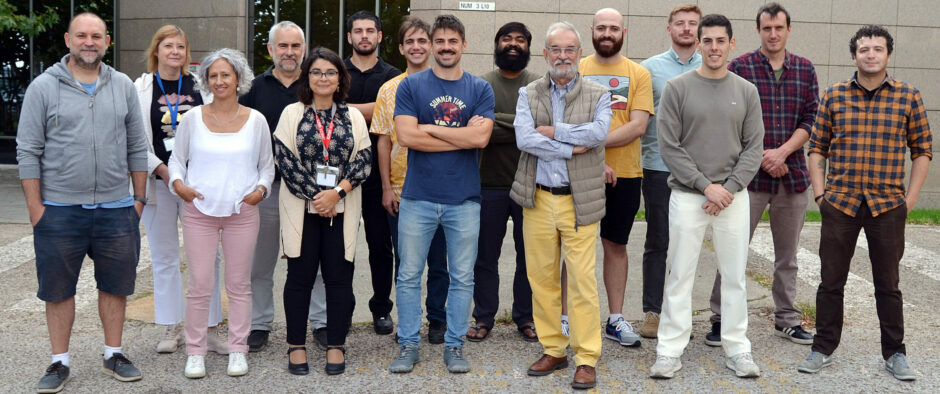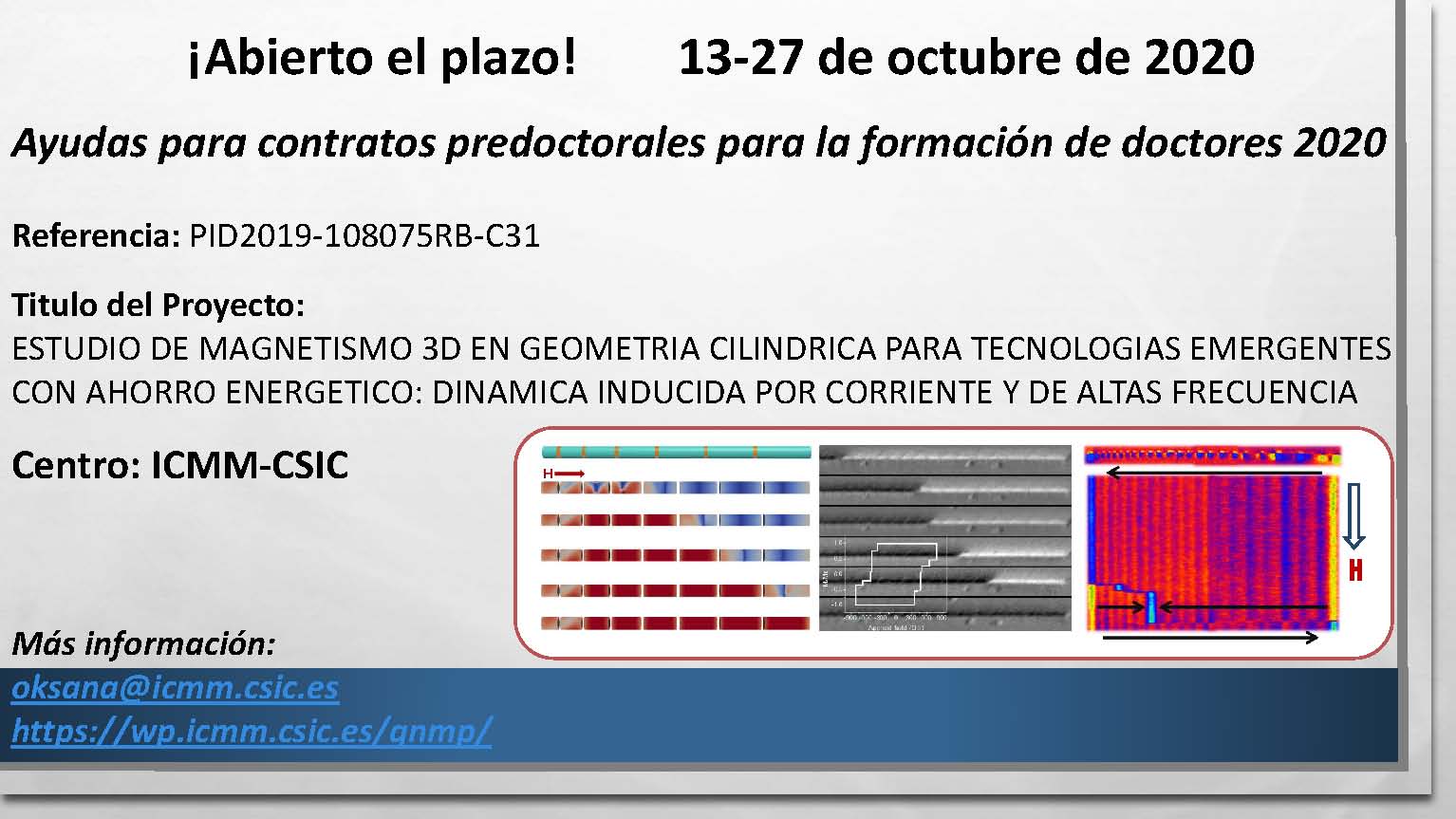“Electric current and field control of vortex structures in cylindrical magnetic nanowires”
Jose A. Fernandez-Roldan, Rafael P. del Real, Cristina Bran, Manuel Vazquez and Oksana Chubykalo-Fesenko
Phys. Rev. B 102, 024421
doi.org/10.1103/PhysRevB.102.024421
Magnetization dynamics in a cylindrical Permalloy nanowire under simultaneously applied electric current and field is investigated by means of micromagnetic simulations. The reversal process starts with the creation of open vortex structures with different rotation senses at the nanowire ends. Our results conclude that the current alone enlarges or reduces the size of these vortex structures according to the rotational sense of the associated Oersted field. Large current intensity creates a vortex structure which covers the whole nanowire surface. At the same time the magnetization in the nanowire core remains the same, i.e., no complete magnetization reversal is possible in the absence of external field. The simultaneous action of the current and field allows for the complete control of the vortex structures in terms of setting the polarity and vorticity. The state diagram for the minimum field and current required for the vorticity and axial magnetization switching is presented. This control is essential for future information technologies based on three-dimensional vertical structures, and the presented state diagram will become very useful for future experiments on current-induced domain wall dynamics in cylindrical magnetic nanowires.

This work has been supported by the Spanish Ministry of Economy, Industry and Competitiveness (MINECO) under project MAT2016-76824-C3-1-R and by the Regional Government of Madrid under project S2018/NMT-4321 NANOMAGCOST-CM.



